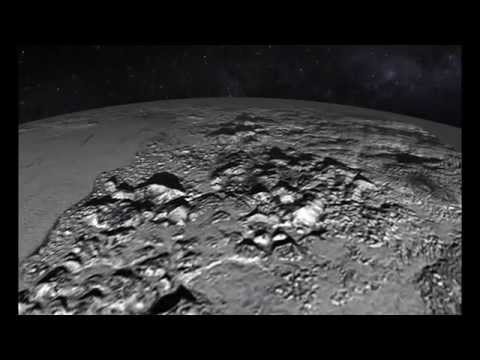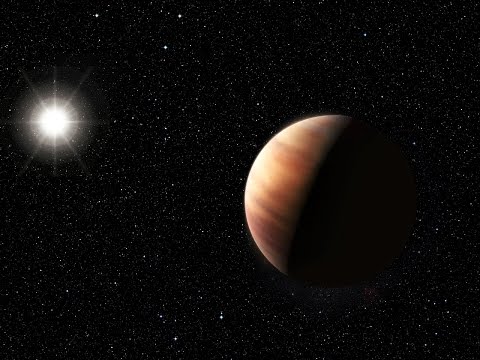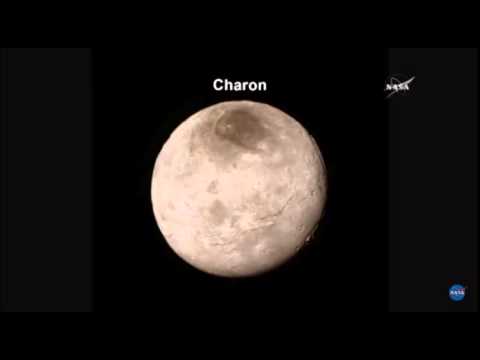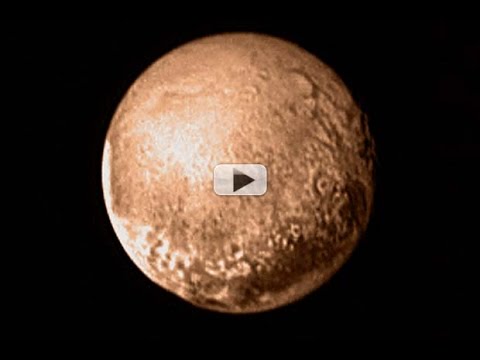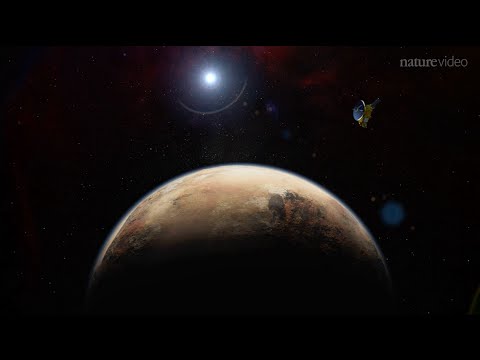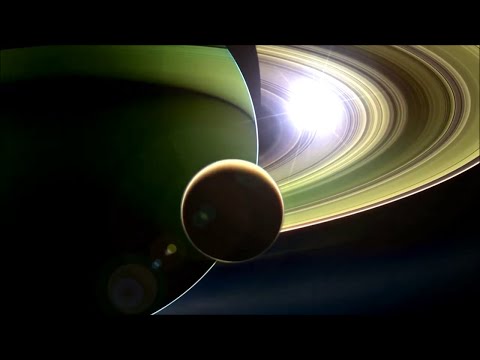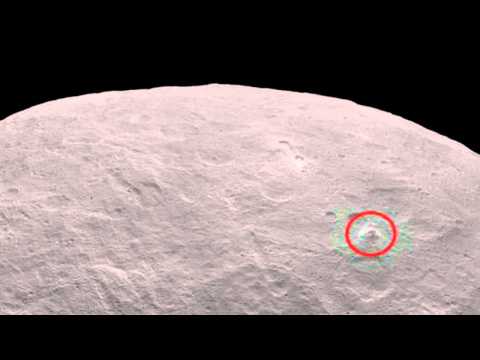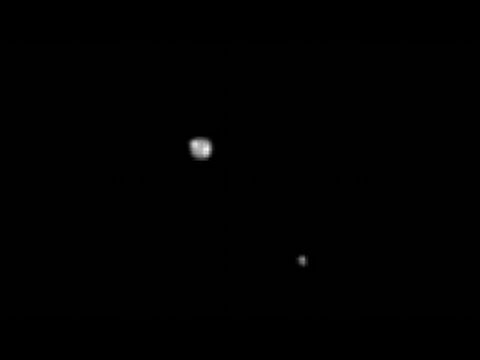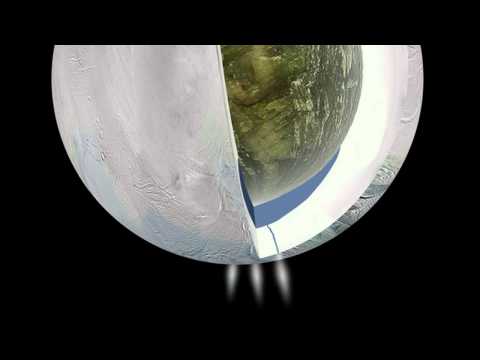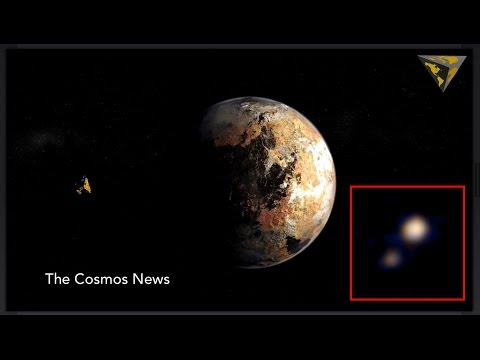Category: The Solar System
This video represents a simulation of NASA’s New Horizons’ flyover of Pluto’s terrain that reveals its icy mountains and frozen plains. We can see Pluto’s Norgay Montes (Norgay Mountains) and Sputnik Planum (Sputnik Plain)....
After years of hunting for an Earth-like planet outside of our Solar System, astronomers have discovered a Jupiter’s twin planet, orbiting around a Sun-like star, HIP 11915. This newly discovered planet has similar mass...
After a day NASA’s New Horizons spacecraft has made its flyby of Pluto, NASA releases brand new images of Pluto’s two moons – Charon and Hydra, and the astonishingly detailed picture of Pluto’s surface....
NASA’s New Horizons mission is just one day away from its closest encounter with Pluto and astronomers have already found out that Pluto is larger than they previously thought. With its diameter of 1,473...
A new photo of Pluto reveals that the four dark spots, with each spread around about 300 miles, are placed on its far side that faces Charon. NASA’s New Horizons probe has been continuously...
Pluto has fascinated scientists for years. Its distance, its orbit, strange moon Charon, and other bodies that surround it, intrigue scientists and finally caused them to launch the New Horizons spacecraft 9 and a...
Saturn’s Earth-like moon, Titan, is known for its numerous lakes and seas, detected by NASA/ESA’s Cassini spacecraft. They are filled with liquid methane and ethane, and some of them fill and vapor by the...
After the discovery of the mysterious bright spots on Ceres, NASA’s Dawn spacecraft has found a new gigantic pyramid as it approaches Ceres. The image of the cone structure on the surface of Ceres...
New images of Ceres, the largest body in the asteroid belt, were captured by NASA’s Dawn spacecraft. Scientists used 80 images of Ceres to create this animation. The images, used in this video, are...
The New Horizons’ probe is nearing its end destination – Pluto – in July, this year. While scientists are wondering what New Horizons will find there, we already have the evidence that shows unusual...
NASA’s New Horizons spacecraft has taken an amazing photo of Pluto’s tiniest moons, Kerberos and Styx. These images were captured from a distance of 55 million miles away. In July this year, NASA’s New...
Scientists have captured a new image of a dwarf planet Ceres, which reveals more bright spots on its surface than they possibly thought. Although this new image is clearer and detects the crater on...
NASA’s New Horizons probe has captured the latest image of Pluto from a distance of 70,000 miles. This image displays a bright spot on the dwarf planet’s surface, which may represent its polar ice...
NASA’s Cassini mission enables scientists to rethink the nature of a hundred geysers they found on Enceladus, Saturn’s sixth moon. They reconsidered their previous explanation on erupting jet-like geysers on Enceladus and concluded that...
On its 9-year-old journey to the unexplored world of Pluto, NASA’s New Horizons captured the first color photo of this planet. The image of Pluto and its moon, Charon, is taken on April 9,...
The Alpha Centauri system is the closest star system to ours, which is 4.37 light-years away from the Sun. But, can we really imagine what these 4.37 light years mean? This video helps us...
NASA’s Dawn Spacecraft captured a few images of Ceres’ north pole on April 10th. These high-resolution images are taken from a distance of 33.000 kilometers.
NASA’s Dawn spacecraft captured two spots on dwarf planet Ceres from a distance of 45.000 km. These new infrared images, released at a meeting of the European Geosciences Union, reveal the two bright spots...

